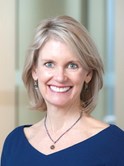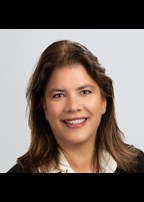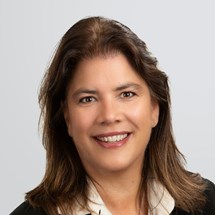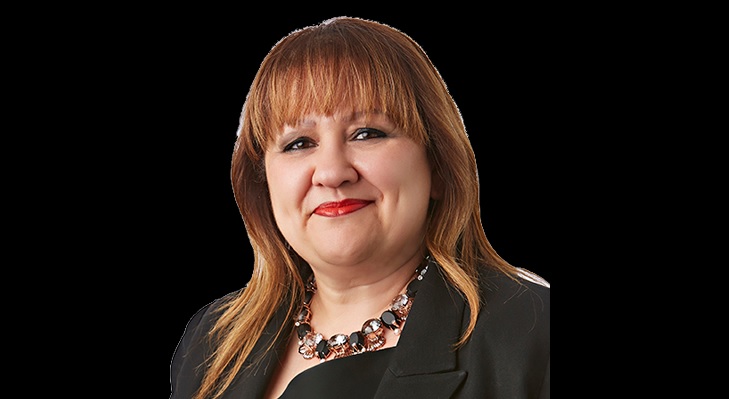
- Molly Shannon, Member of the Executive Committee and Product Innovation Committee, Wellington Management (USA)
- Todd Needham, Director of Insurance Relationship Management, Loomis, Sayles & Company (USA)
- Sallie Squire, Chief Administration Officer, Wells Fargo Asset Management (USA)
Fund Operator: How did your teams cope with recent market volatility and adapting to remote working amidst considerations for health and safety?

Molly Shannon: We created a global taskforce comprised of the senior leadership from all our key functions to really focus on the health and well-being of our employees.
They operated around the clock and focused on developments related to both the disease and the markets.
We recognised that we could not meet our fiduciary responsibilities to our clients without ensuring that our employees and their families were safe and healthy.
"We created a global taskforce comprised of the senior leadership from all our key functions"
We also have a deep reservoir of medical expertise in-house – a healthcare team of 20 global research analysts and portfolio managers – that we were able to lean into.
One of those experts is an infectious disease doctor, who drew on his experience and facilitated thought-provoking conversations with our other investment professionals, as well as external experts.
Our leadership had a great deal of information at their disposal as they debated and deliberated the expected length of the crisis, the impact across regions, and decisions about working from home, managing operations virtually, and continuing to meet client needs.
"We successfully transitioned about 2,700 employees across 14 offices globally to a work-from-home environment."
Of course, these insights also informed the decisions our investment professionals made during the harrowing early weeks of the crisis, as opportunities came and went quite rapidly.
When the disease hit the US in March, we had already been planning and piloting work from home and testing Business Continuity Plans with key vendors for months, largely because our Asian colleagues had started their transition months earlier.
By mid-March, we successfully transitioned about 2,700 employees across 14 offices globally to a work-from-home environment.
Todd Needham: We have a taskforce made up of our executives and leaders of different functional groups within Loomis Sayles, who meet on a daily basis to assess local and federal guidelines, the safety of our global employees, and the process of a potential return to the office environment.

With regards to coping to the changes from a workforce perspective, we were fortunate because we had strong technology resources in place at the time of the transition.
On March 6th, our firm conducted a worldwide work from home test to ensure our infrastructure could handle the demand.
The results were successful, so on March 16th our global workforce, including the US, UK, and Singapore transitioned to a work from home environment using our remote systems.
"Our firm conducted a worldwide work from home test to ensure our infrastructure could handle the demand."
In terms of the health and wellbeing of our employees, the process has focused on learning how to be productive in new environments that are full of challenges and distractions, not necessarily experienced in an office environment.
There has certainly been an uptick in internal communication. This has undoubtedly been a stressful period for employees and our HR team has done a great job of connecting with employees, conducting internal surveys, and communicating regularly to employees in an effort to provide guidance and assurance.
Our CEO, Kevin Charleston, sends out a firm-wide memo every Friday so that all employees are aware of the latest issues, challenges and even positive news that takes place over the week.
From a market volatility standpoint, it isn’t as if our investment teams haven’t been through something like this before.
"There has certainly been an uptick in internal communication."
Most of our PMs have been navigating volatility for decades including the 2008-2009 Global Financial Crisis.
In fact, it is within environments like this that our PMs look to take advantage of market dislocations to position their portfolios for their next three, five and even ten years.
Preparation for these events is key and our research infrastructure is critical to investment teams as they prepare for and execute in market selloffs.
In addition to the importance of internal communication, the other important component has been external communications with our clients.
"It is within environments like this that our PMs look to take advantage of market dislocations to position their portfolios"
As an investment firm, we exist on behalf of our clients. When instances like this arise, it is vital that we proactively reach out to our clients and share information with them; what we know, what we do not know and what we are trying to find out.
This latest market event was no different – we mobilized quickly to get out in front of our clients to let them know that they weren’t alone, as well as what was going on with their portfolios.
Sallie Squire: Much of what was said is similar to us regarding the safety of our people, our portfolios, trading capabilities and our office and client strategy.

We were all surprised at how well everyone transitioned to the working from home environment so suddenly.
No one would have predicted it on this level, but we tested our BCP, so we were confident that we had the tools in place.
"One of the keys to this situation was staying connected to everyone"
We do have 24 offices worldwide, so we work virtually across multiple teams already in our daily lives, which helped us to get there quickly, but it was still wonderful to see that everyone rose to the challenge.
One of the keys to this situation was staying connected to everyone, whether it was to your teams your clients, making sure that everyone was safe was a priority.
Some of the legacy, whether it was clients or leaders who were more reluctant to get some of the new technology in place have been forced to do so but are loving it.
"It was a cultural shift for traders to work remotely, as opposed to them not having the tools."
It has been nice to see some of the silver linings regarding the proactiveness of people wanting to stay connected, the care and efficacy for our team members, and clients.
Interestingly, early on it was more about keeping some of our PMs and traders out of the office, as the markets got more volatile. It was a cultural shift for them to work remotely, as opposed to them not having the tools.
Particularly in locations where they had less shelter in place rigour than in some cities, some of the team members wanted to be in.
Working through those logistics was interesting, but we did get on to a daily leadership focus and a consistent strategy regardless of location which worked well.
Please Sign In or Register to leave a Comment.
SUBSCRIBE
Get the recent popular stories straight into your inbox




